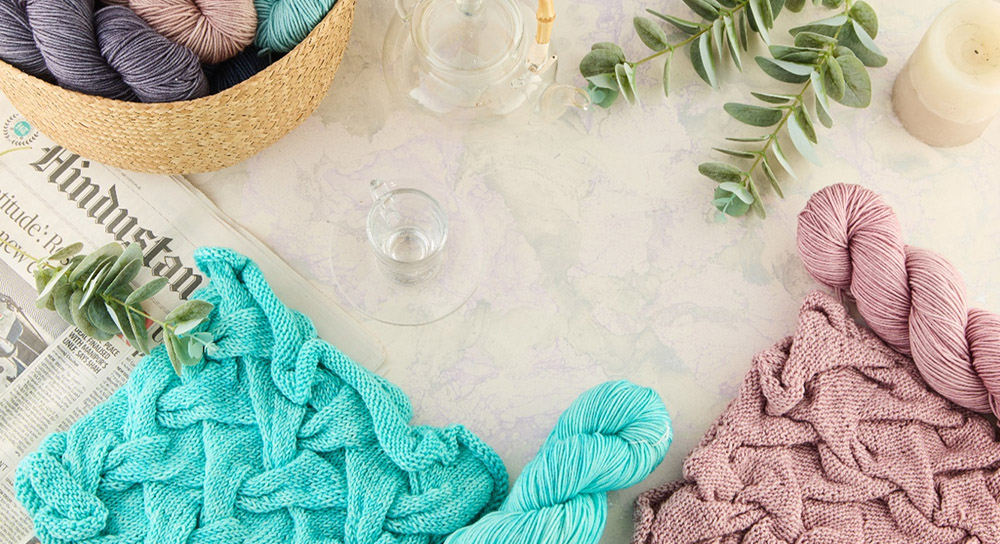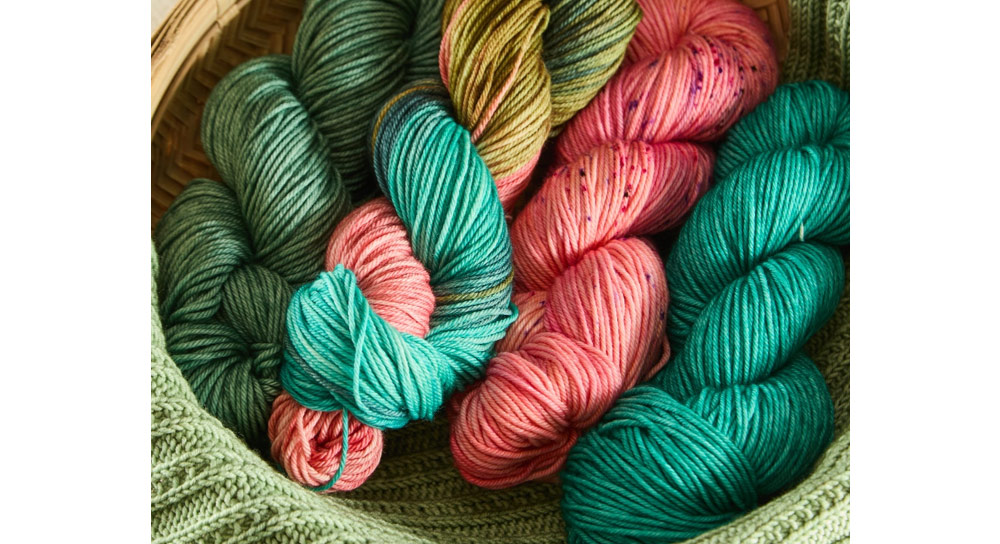Knit and Crochet Troubleshooting: How to Fix Yarn Mistakes Like a Pro
- Blog Views : 776
- Symfonie Yarns
- 01Apr, 2025

Mistakes are a part of creativity, especially when working with yarn. In your crafting journey, whether you are just starting or have been honing your skills for years, you will come across mistakes whether it’s in knitting or crocheting. Though mistakes may seem frustrating, believe us when we say they are opportunities to learn. Colorful yarns are more than just a way to express creativity, they bring to life knitting and crochet projects. So, whether you make a pair of socks, a blanket, scarf, sweater, or home décor with knitting needles or crochet hooks, there are some challenges that you might come across. In this blog, let’s take a look at some common mistakes and learn how to fix them.
We’ll be covering topics:
- Choosing the Wrong Yarn
- Not Understanding the Fiber Content
- Ignoring the Colors and dyeing process
- Improper Yarn Storage
- Overlooking Yarn Requirements
- Neglecting Yarn Preparation
- Incorrect Yarn Tension
1. Choosing the Wrong Yarn
Many times, it’s awe or love for that yarn that tempts you to immediately cast on stitches on your knitting needles or work in a chain with your crochet hook without thinking much. This may lead to the mistake of choosing the wrong yarn.
How to Fix
Always check the pattern's recommended yarn weight. If you’ve been asked for fingering yarn choose the same. DK yarn is a popular choice and is also easily available as is worsted-weight. If you do not have the same yarn weight, work with a converter if needed. Always knit or crochet a gauge swatch before starting your project. And, when in doubt, ask at your local craft store or in online crafting communities; they are always ready to help.
Also read- The Ultimate Guide to Yarn Weights: Fingering, DK (Double Knit) vs Worsted
2. Not Understanding Fiber Content
If color gives yarn the personality, fiber gives it soul. So, when you plan a project, always understand the yarn. Choosing a yarn without considering its properties can result in failed projects. No knitter would love socks that don’t fit well or wash properly. Similarly, for crochet projects that don’t have stitch definition will also be a bad choice.
How to Fix It
Always match the yarn fiber to the project's purpose. Also, consider care instructions before purchasing. Merino wool is always a good choice. It is soft, easy to care for and least susceptible to allergies. Extrafine merino wool is a special variety of 19.5 microns and less. Yarn blends are also very helpful as they bring the best of two different ingredients. A merino-polyamide yarn blend in fingering weight, such as Terra, is the ideal sock yarn. While extrafine merino wool in worsted weight, such as Bella, is perfect for winter garments and accessories. Extrafine merino wool and DK weight such as Viva yarn range is ideal for all kinds of knitting and crochet projects. Plus, all three ranges are machine-washable, making it easy to care for. Merino-silk yarn in DK weight from Luna gives every project an extraordinary feel.
3. Ignoring Colors and the Dyeing Process
It’s easy to get tempted by colors. However, there’s more to it. Choosing the best colors for a project is a science. Understanding which colors suit a sweater is different from one work with gloves. Also, knowing about the dyeing process is essential. Hand-dyed yarns are an artisan’s canvas and it is very easy to get tempted to begin projects. But, keep in mind the project. A variegated yarn skein may not be the best choice for cables as the colorways may not shine, while a semisolid shade may flatten a project with textures. Also, buying yarn from different dye lots can create visible color variations in your project, even if the colors look identical in the store.
How to Fix It
The best fix is to always buy premium-quality yarns. Choosing hand-dyed yarn skeins are a good choice. Always shop for yarn around 15-20% than required for a project. Also, starting with a gauge swatch is a good option that allows you a glimpse of how the fabric will turn out to be.
4. Improper Yarn Storage
Knitting and crocheting projects take time, so store your yarn correctly in essential. Storing yarn incorrectly can lead to stretching, moth damage, dust accumulation, and color fading.
How to Fix It
Read the yarn label instructions. Store yarn in cool, dry places. Use airtight containers or bags. Always keep away from direct sunlight. If it’s a large project, such as a blanket or rug, use cedar blocks to prevent moth damage. For leftover yarn or projects that you will be planning in the future, organize by weight and fiber content.

5. Overlooking Yarn Requirements
As new knitters and crocheters, you may not be good at estimating yarn. Even sometimes following the pattern instructions may also result in falling short of yarn or having too much of it. Buying insufficient yarn or not calculating yardage correctly can halt a project midway. Having more skeins than needed gives you anxiety.
How to Fix It
Start with a gauge swatch to calculate the yarn needed. Always buy 10-15% more yarn than the pattern suggests.
Also Read: Guide to Yarn Substitution for Your Knitting Projects
6. Neglecting Yarn Preparation
Jumping into a project without properly preparing your yarn can cause tension issues and uneven stitches. Whether it’s small projects or huge ones, make sure to prepare the yarn.
How to Fix It
Never start with a store-bought yarn skein or hand. Test a small section to understand its behaviour. Get them a spin of your yarn swift and winder, checking for and removing any knots before starting. Wind yarn into center-pull balls or cakes. Steam or block your yarn if it's kinked from previous storage.
Remember, every mistake is a learning opportunity in the world of knitting and crocheting. Most of the mistakes are correctable. However, you can always rip out the stitches and begin again. With premium yarns, the fiber does not get damaged during the frogging of your project. You can always begin again.
Happy crafting!
Before buying yarn skeins for knitting and crochet projects, read these topics.
Related articles:
How to Care for Your Knitted or Crocheted Projects?
-
- 19 Apr,2025
-
- 14 Apr,2025
-
- 10 Apr,2025
-
- 07 Apr,2025
-
- 04 Apr,2025
-
- 28 Mar,2025
Copyright © Symfonie Yarns 2025 - all rights reserved | RSS Feed
